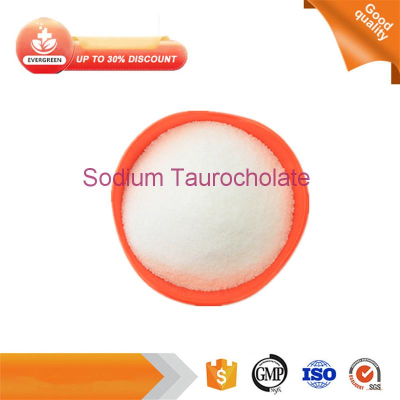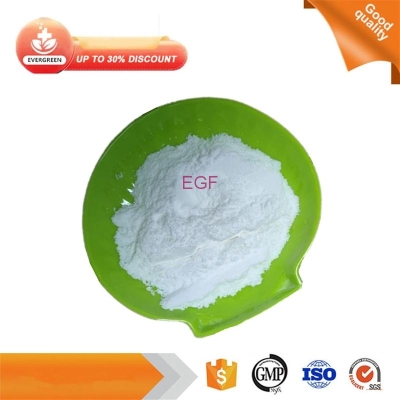-
Categories
-
Pharmaceutical Intermediates
-
Active Pharmaceutical Ingredients
-
Food Additives
- Industrial Coatings
- Agrochemicals
- Dyes and Pigments
- Surfactant
- Flavors and Fragrances
- Chemical Reagents
- Catalyst and Auxiliary
- Natural Products
- Inorganic Chemistry
-
Organic Chemistry
-
Biochemical Engineering
- Analytical Chemistry
- Cosmetic Ingredient
-
Pharmaceutical Intermediates
Promotion
ECHEMI Mall
Wholesale
Weekly Price
Exhibition
News
-
Trade Service
Only for medical professionals to read the reference article is very long, read the previous article first
.
With the increase in obesity and diabetes, the prevalence of non-alcoholic fatty liver disease (NAFLD) is rising rapidly worldwide, and the prevalence of NAFLD in most Asian countries, including China, is at the middle to upper level (> 25%) , Is expected to become more common in the future and become the main cause of chronic liver disease
.
Some NAFLD patients can progress to end-stage liver diseases such as liver cirrhosis and hepatocellular carcinoma, which brings a huge medical burden
.
The Korean Society for the Study of Liver Diseases (KASL) released a new version of NAFLD management guidelines in June this year, and updated the 2013 version of the guidelines, mainly related to the diagnosis and treatment of NAFLD, including recommendations for children and adolescents, and providing relevant information for clinicians Guidance
.
This article will compare and interpret this guide with the 2017 U.
S.
Non-Alcoholic Fatty Liver Disease Diagnosis and Management Guide, and the domestic NAFLD guide.
Let's take a look at the updated content of this newly released guide
.
This guide uses the GRADE classification to classify the quality of evidence into A (high), B (medium), C (low) and D (very low); the strength of recommendation is divided into "strong recommendation 1" or "weak recommendation 2"
.
Diagnosis of NAFLD 1 Who needs NAFLD screening? How to screen? KASL guidelines recommend: 1.
Patients with persistent elevated liver enzymes or diabetes should be screened for NAFLD
.
(Level of Evidence: A1) 2.
Patients with metabolic syndrome (closely related to insulin resistance, obesity and other risk factors for NAFLD) may consider screening
.
(Level of Evidence: B1) 3.
Abdominal ultrasound is a preliminary screening method
.
(Level of Evidence: B1) ▎Analysis: The 2017 guidelines of the American Society of Liver Diseases are based on the research data at the time.
It is believed that the cost-effectiveness of screening is not clear, and the diagnosis method and treatment plan are not accurate.
It is not recommended to visit a primary care clinic, diabetes or NAFLD is routinely screened in high-risk groups in obesity clinics
.
This guide refers to the results of comprehensive analysis and large-sample cohort studies, and believes that the cost-effectiveness of screening for diabetic patients has been confirmed, and diabetic patients should be screened for NAFLD regardless of their liver enzyme levels
.
The primary screening for NAFLD is ultrasound
.
When NAFLD is suspected by ultrasound, CT, MRI, serological examination, transient elastography (TE) and other methods can be considered to assist in the diagnosis
.
2Which non-invasive methods can be used to diagnose liver steatosis? KASL guidelines recommend: 1.
Abdominal ultrasound, controlled attenuation parameters (CAP), CT plain scan, magnetic resonance spectroscopy (MRS) and magnetic resonance imaging proton density fat content determination (MRI-PDFF) are feasible methods for diagnosing liver steatosis
.
(Level of Evidence: A1) 2.
If radiological examination is not feasible, the liver steatosis test kit can be used to assess liver steatosis
.
(Level of Evidence: B1) 3.
Abdominal ultrasound is a first-line imaging screening method for asymptomatic patients with abnormal liver enzymes.
However, it is affected by subjective factors, difficult to check for obese patients, and sensitivity is low when the degree of liver steatosis reaches 30%.
Distinguish between NASH (non-alcoholic steatohepatitis) and NAFL (non-alcoholic simple fatty liver)
.
▎Analysis: Ultrasound is suitable for screening mainly because: ①It has a strong diagnostic ability for moderate and severe steatosis; ②It can evaluate the entire hepatobiliary system; ③It is widely and easily available
.
CAP is an indicator of transient elastography, which can quantify the degree of fat deposition in the liver parenchyma by measuring ultrasound attenuation
.
CT can be used for quantitative assessment of liver steatosis
.
For moderate and severe steatosis, CT has high specificity, but the sensitivity and positive predictive value are low, and the diagnostic effect of mild steatosis is poor
.
CT is less effective for patients with infiltrating liver disease who deposit iron, copper, glycogen or amiodarone in the liver parenchyma
.
MRI is superior to ultrasound in mild fatty lesions and is the most accurate imaging tool for evaluating NAFLD, including MRS and MRI-PDFF
.
Combination testing: Although serology testing can not directly diagnose liver steatosis, it can help determine whether further evaluation is necessary for suspicious patients
.
Table 1: Hepatic steatosis test kit 3 Which non-invasive methods can be used to diagnose NASH? The KASL guidelines recommend: 1.
The non-invasive diagnosis of NASH is still limited, and the diagnosis should be made through liver biopsy
.
(Level of Evidence: A1) ▎Analysis: According to BMI, waist circumference, metabolic risk factors, co-existing diseases, and blood biochemical (ALT, cytokeratin-18, etc.
) indicators, it is helpful to comprehensively judge whether people at high risk of NASH, and if necessary Biopsy
.
4Which non-invasive methods can be used to assess liver fibrosis? KASL guidelines recommend: 1.
Radiological examinations such as transient elastography (TE), point shear wave elastography (point SWE), two-dimensional shear wave elastography (2D SWE) and magnetic resonance elastography (MRE) are helpful Assess liver fibrosis
.
(Level of Evidence: A1) 2.
If radiological examination is not feasible, a set of tests such as NAFLD Fibrosis Score (NFS) or FIB-4 Index can be used to diagnose liver fibrosis
.
(Level of Evidence: B1) ▎Analysis: Radiology is based on ultrasound-based liver fibrosis measurement techniques such as shear wave elastography (SWE)
.
It can be divided into two categories: ① instantaneous elastography (TE); ② point shear wave elastography (point SWE) and two-dimensional shear wave elastography (2D SWE)
.
The accuracy of TE is affected in obese patients
.
Magnetic resonance elastography (MRE) has a high diagnostic accuracy rate for liver fibrosis.
Unlike TE, MRE can evaluate the entire liver parenchyma.
There is no limitation for obese patients and it has good repeatability
.
MRE is currently the most accurate non-invasive examination method for diagnosing liver fibrosis
.
However, the cost is higher, and invasive diseases such as iron deposition, severe liver steatosis, liver congestion or acute inflammation will reduce the accuracy of MRE
.
Some of the test kits that have been proven to be effective are shown in the following table, and the most researched one is NFS
.
Table 2 Hepatic Fibrosis Group Test 5 Which methods can distinguish advanced fibrosis? KASL guidelines recommend: 1.
Prioritize non-invasive methods such as TE, FIB-4 and NFS to identify advanced liver fibrosis
.
(Level of Evidence: A1) 2.
Serological examinations, imaging examinations and liver biopsy can be used as additional evaluation methods for liver fibrosis
.
(Level of Evidence: B1) ▎Analysis: When the subject is at intermediate risk, additional tests such as M2BPGi, AsAGP, ELF, SWE or MRE can be performed
.
If it suggests advanced fibrosis, additional testing can be performed to reassess the degree of liver fibrosis or liver biopsy
.
Figure 1 Process for identifying advanced liver fibrosis 6 What are the indications for liver biopsy? KASL guidelines recommend: 1.
Patients suspected of having NASH or advanced liver fibrosis should consider liver biopsy
.
(Level of Evidence: B1) 2.
When coexisting chronic liver disease and its severity cannot be ruled out, liver biopsy should be considered
.
(Level of Evidence: B1) 7 Monitoring and Prevention of Liver Cancer Recommendations in the KASL guidelines: 1.
Patients with NAFLD-related cirrhosis need to be monitored for liver cancer
.
(Level of Evidence: A1) 2.
In order to reduce the incidence of liver cancer in NAFLD patients, it is recommended to quit smoking, quit alcohol and lose weight
.
(Level of Evidence: B1) ▎Analysis: The incidence of liver cancer in patients with NAFLD-related cirrhosis is> 1.
5% per year.
If liver cirrhosis is suspected clinically, liver cancer monitoring is recommended
.
Abdominal ultrasound is the main monitoring method for liver cancer
.
For overweight or obese patients, CT or MRI can be used
.
Studies have shown that smoking, drinking, and diabetes can increase the incidence of liver cancer
.
Weight loss and exercise can improve steatosis and liver fibrosis, and the relationship with the incidence of liver cancer needs further study
.
For more content, please continue to pay attention to the digestive liver disease channel of the medical community.
The next part (tomorrow) will bring you the treatment of NAFLD and suggestions for children and adolescents.
Please look forward to it! Scan the code to download the doctor station App2w+ guide for you to download for free







